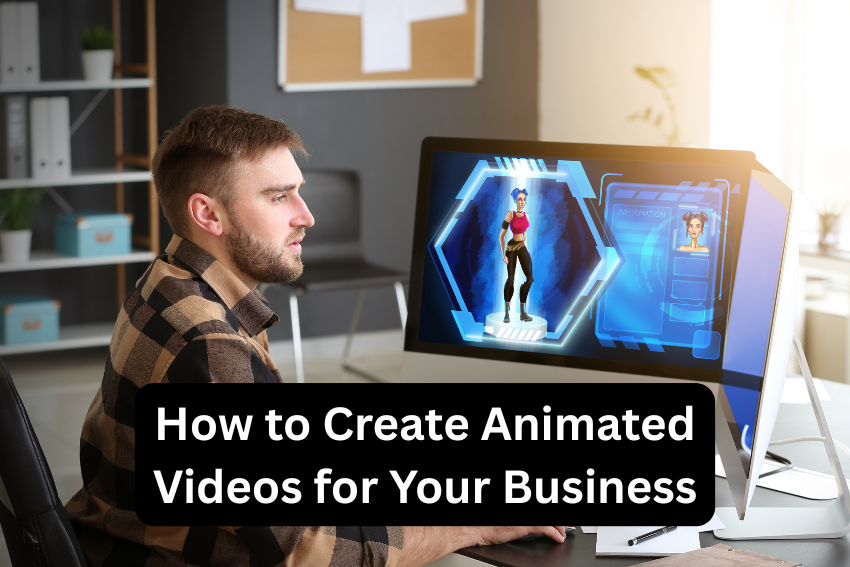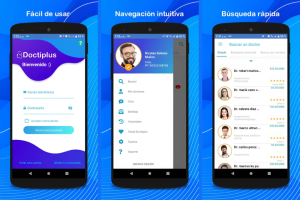The internet’s a noisy place. You’re competing with cat videos, viral dances, and your cousin’s endless vacation pics. So how do you make your business stand out? Create animated videos, that’s how. They’re like a neon sign in a sea of Gray—bright, bold, and impossible to scroll past. A well-done animation can make your brand feel alive, whether you’re selling cupcakes or teaching yoga.
I learned this the hard way. Picture me, a few years back, trying to get my handmade soap business off the ground. My marketing was a sad little Instagram account with blurry photos and captions like “Buy my soap!” Then I saw this animated ad for a coffee shop—cartoon beans doing a conga line, with this catchy jingle—and I was done. I wanted that kind of magic for my soaps, but I was broke, tech-clueless, and honestly, a little scared. animated videos sounded like something for Pixar pros, not a gal working out of her garage. But I dove in, made a mess, cried over crashed software, and eventually figured it out. You don’t need to be a pro to create an animated video that slaps. You just need some heart, a plan, and maybe a strong cup of coffee.
This guide’s everything I wish someone had told me when I was starting. It’s not a textbook—it’s more like me grabbing you by the hand and saying, “Let’s make something awesome.” From brainstorming to final tweaks, I’m spilling my secrets for creating animated videos that make your business shine. Ready? Let’s do this.
Why Animated Videos are Your Secret Weapon
First off, why bother with animated videos? Because it’s freedom in video form. Live-action shoots are a hassle—think expensive gear, diva actors, or weather ruining your perfect shot. Animation? You’re the boss. Want a dinosaur selling your dog treats? A sparkly logo soaring through space? You can make it happen, no film crew needed.
I tried live-action once for my soap business. Picture me in my backyard, holding a bar of lavender soap like it was a Grammy, while my neighbor’s lawnmower roared. The video was a disaster—shaky, awkward, and honestly, a little embarrassing. Animation saved me. I could create a dreamy world where soap bubbles floated like clouds, all from my creaky laptop.
Animated videos are also super versatile. They work for quick social media ads, in-depth explainers, or emotional pitches that hit you in the feels. Plus, they’re shareable. When I made a video for my friend’s flower shop, it spread like wildfire because people couldn’t stop sharing the clip of cartoon roses blooming in sync with a love song. It was pure joy.
The real magic, though? Animation makes hard stuff easy. I worked with a nonprofit once, trying to explain their recycling program. Their mission was great, but their pitch was a snooze fest of stats and jargon. We turned it into a 60-second video with a chatty recycling bin character. Suddenly, people weren’t just listening—they were into it. That’s the power of a good animated story.
9 Simple Steps to Create Animated Videos for Your Business

Learn how to create animated videos for your business with this beginner friendly guide. Boost your brand with storytelling, tools, and tips.
Step 1: Figure out Your Goal and Your People
Before you touch a single tool, you gotta know what you’re aiming for and who you’re reaching. Your goal’s like the GPS for your video. Are you trying to sell stuff? Teach something? Get people to know your name? That’s what keeps you from getting lost in a sea of sparkly effects.
For my soap business, I wanted a video that felt like a warm hug, showing how my products could turn a stressful day into a spa moment. That goal stopped me from going overboard with random animations that didn’t fit. If you’re a dog trainer, maybe your goal’s to show how your classes make pups and owners happy. If you’re a charity, maybe it’s about sparking donations. Write it down, even if it’s just a messy note on a napkin.
Now, your audience. They’re not just “people.” Are they teens? Busy moms? Outdoorsy types? Think about what makes them tick. What do they worry about? What makes them grin? When I helped a music teacher with a video, we knew her students were mostly kids and their parents, so we used bright colors and a bouncy vibe to feel like a Saturday morning cartoon.
Take a sec to scribble your goal and a quick sketch of your audience. Nothing fancy—just enough to know who you’re talking to and why. It’s the foundation of everything else.
Step 2: Spin a Story That Hooks
Every video needs a story, even if it’s short enough to fit in a tweet. Stories are what make people stop scrolling and pay attention. They don’t have to be epic—just a little journey that feels real. A problem, a solution, a moment that sticks.
Start with your big idea. Say you run a coffee shop. Your message might be: “Our coffee’s fresh, local, and makes your morning better.” Now, turn that into a story. Maybe it’s about a sleepy commuter who finds joy in your shop’s latte art. Or a montage of beans traveling from farm to cup. When I did my soap video, I told the story of a frazzled mom finding calm with my chamomile scrub. It wasn’t Shakespeare, but it hit home.
Writing the script’s where you make it sing. Keep it real, like you’re telling a friend why your business rocks. Short sentences. Vivid words. No buzzwords—nobody cares about “synergy.” If it’s something complicated, break it down like you’re explaining it to your grandma. And end with a nudge: “Visit us!” or “Try it free!” My first script was a ramble, so I read it aloud and cut anything that felt like filler. It’s like trimming split ends—makes everything sharper.
If you’re stuck, try this: jot down the problem your audience has, how you solve it, and why that’s awesome. That’s your story’s skeleton. Add a character or a quirky detail, and you’re golden.
Step 3: Pick a Visual Style That Screams You
The look of your video is what grabs people first. It’s the colors, the shapes, the whole mood. Are you going for cute and cartoony? Dark and moody? Something totally wild, like a psychedelic dream? Your brand’s vibe is your guide.
My soaps were all about calm, so I went for soft greens and purples with wiggly, hand-drawn lines that felt like a cozy blanket. If you’re a gym, you might pick bold reds and sharp angles to feel high-energy. When I helped a pet store, we used playful, rounded shapes to match their fun, furry vibe.
Think about what’s doable, too. 2D animation’s easier and cheaper than 3D, which can be like learning to fly a spaceship. If you’re new, start simple—simple can still be stunning. My first video had this one bubble effect I thought was the coolest, but feedback said it stole focus. I dialed it back, and the story shone brighter.
To spark ideas, make a mood board. I’m a nerd, so I glue scraps of fabric and magazine bits to a poster board, but you can just screenshot stuff online. Pick a few colors that feel right—maybe a deep blue, a sunny yellow, a hint of gray. For the music teacher’s video, we used rainbow hues to feel young and lively, and it worked like a charm.
Step 4: Grab Tools That Don’t Scare You
You don’t need a million bucks or a tech degree to create animated videos. There are tools out there that are so easy, even I didn’t break them (and I’m notorious for crashing apps). Here’s what I’ve played with:
- Canva: My first love. It’s got templates that make you look like a pro, even if you’re just guessing. I made a soap ad in a day, and it was cute.
- Ani maker: Awesome for 2D cartoons. You can pick characters and tweak them without crying. It’s what got me over my tech fear.
- Adobe After Effects: For when you’re feeling fancy. It’s tough to learn, but you can make slick stuff that feels big-budget.
- Blender: Free and wild for 3D animation. I tried it once and felt like I was solving a puzzle blindfolded, but it’s powerful if you’re patient.
My first video was all Canva, and I was shocked at how good it looked for zero dollars. If you’re hiring a freelancer, you don’t need to know the tools inside out, but it helps to understand what’s possible so you can say, “I want this vibe.” I learned that after a freelancer gave me a video with fonts that screamed “corporate memo” instead of “cozy soap.”
Don’t splurge on pricey software right away. Start with free or cheap stuff, and if you catch the animation bug, go bigger. Also, when you’re stuck, search online. I’ve spent hours thanking strangers on YouTube for explaining how to fix a glitch.
Step 5: Storyboard Like You’re Making a Zine
When you start creating animated videos, you need a plan. That’s where a storyboard comes in—it’s like a comic strip of your video, showing every beat. You don’t need to draw well; my sketches look like they escaped a kindergartner’s notebook, but they do the trick.
For each scene, doodle what’s happening, scribble any dialogue or music cues, and note stuff like zooms or spins. This is where you test the rhythm. Is it dragging? Rushing? When I storyboarded my soap video, I saw the ending was flat, so I added a bubble-popping moment that felt fun. Saved the whole thing.
If you’re on your own, a storyboard keeps you from spiraling. If you’re with a team, it’s your way to say, “This is what I see.” I skipped this once and got a video that felt like a fever dream—never again. Grab some paper, a pen, and just go for it. It’s like planning a party, but for your video.
Also Read – The Role of Animation in Mobile User Experience
Step 6: Animate Like Nobody’s Watching
Now the real fun: animating. If you’re using Canva or Animaker, it’s like decorating a cake—drag, drop, tweak. With After Effects, it’s more like conducting an orchestra, controlling every note. Either way, it’s a rush when it starts coming together.
Start rough. Lay out the big pieces—where characters move, how scenes shift. Don’t obsess over details yet. My first animation was a mess because I spent forever making a soap bubble perfect, then realized the scene was too slow. Now I block it out first, then add the sparkle.
Work in bits to stay sane. Animate a scene, take a walk, do another. For the flower shop video, I did the blooming roses one night and the background shop the next. It felt like building a puzzle, piece by piece.
If this sounds like too much, hire someone. Sites like Fiverr have animators who’ll bring your storyboard to life without breaking the bank. Just be clear about your vision—I learned that after a freelancer gave me a rose that looked like a flamingo. My fault for not sharing enough details.
Step 7: Add Sound That Feels Like Home
Sound’s what makes your video feel real. Music sets the vibe, voiceovers add soul, and sound effects give it that extra kick. A soft piano can make it tender; a funky beat can make it dance.
You can record a voiceover yourself if you’ve got a quiet spot and a mic. I did one in my closet, surrounded by sweaters to muffle noise—looked amazing, worked great. Or hire a voice actor. For the music teacher’s video, we found a gal with a bubbly voice that felt like a kid’s show host. Nailed it.
Music’s gotta fit but not overpower. Sites like AudioJungle or Free Music Archive have tracks you can use legally. Play it with your video to check the balance—too loud, and it’s distracting; too soft, and it’s pointless. I once picked a track so dramatic it made my soap video feel like a war movie. Swapped it for something gentle, and it was perfect.
Sound effects are the sprinkles. A bird chirp, a bubble pop, a door squeak—little bits that make it pop. Don’t overdo it; my first video had so many effects it sounded like a circus. Keep it subtle.
Step 8: Polish It Till It Gleams
You’re so close! Watch your video like it’s brand-new. Look for hiccups—maybe a transition’s clunky or a color’s off. I always miss something, so I rope in a friend for fresh eyes. They caught a spelling mistake in my flower video that I’d sworn wasn’t there.
Tweak the small stuff: nudge a movement, brighten a shade, cut a second that drags. For the recycling bin video, I added a tiny wiggle to the bin’s “smile” at the end, and it felt so much livelier. Little changes go far.
When it’s ready, export it right. MP4 at 1080p works for most places, but check your platform’s needs—Instagram’s not the same as a big screen. I sent a video to a client once in the wrong size, and it looked like a postage stamp. Save yourself the redo.
Step 9: Share It and Soak It In
Your video’s done—time to show the world! Post it on your site, your socials, your emails. Each spot’s a little different: a quick hit for TikTok, a longer cut for YouTube. The soap video got love on Instagram because we made a 15-second clip that got to the cozy part fast.
Watch how it lands. Are people sticking around? Clicking? Talking about it? The flower shop video got comments like “This is so cute!” which told us we hit the mark. Use that to make your next one even better.
A Few Bits of Hard-Earned Advice
- Short’s sweet: Aim for 60-90 seconds. Say your piece, then bow out.
- Embrace the flops: Your first video might suck. Mine did. But it’s how you learn.
- Stay you: Use your brand’s colors and voice so it feels like yours.
- Play hard: Animation’s a sandbox. Try weird stuff and see what sticks.
Getting Past the Rough Spots
Stuff will go wrong. Software will crash (I lost a whole day’s work once), money will be tight, or you’ll just feel stuck. When the music teacher’s video wasn’t clicking, I took a nap, dreamed of a cartoon piano, and woke up with a new idea. Rest is magic.
If you’re broke, use free tools like Canva’s basic plan. If you’re uninspired, watch animated ads for a spark—just don’t copy. If tech’s being a jerk, hit up YouTube or forums. I owe my sanity to a random tutorial gal who explained transitions like I was five.
Conclusion: Why It’s Worth the Sweat
Creating an animated video is a tough job, but when you see it in action? It’s like nailing a karaoke solo. It’s not just about selling – it’s about sharing what’s on your mind in a way that sticks to the heart. When I showed my friend her flower shop video, she hugged me so tight I couldn’t breathe. So you do it.
So, grab a pen, maybe a snack, and start dreaming. You’ve got a story, and animation’s how you make it sing. Let’s make it happen.


